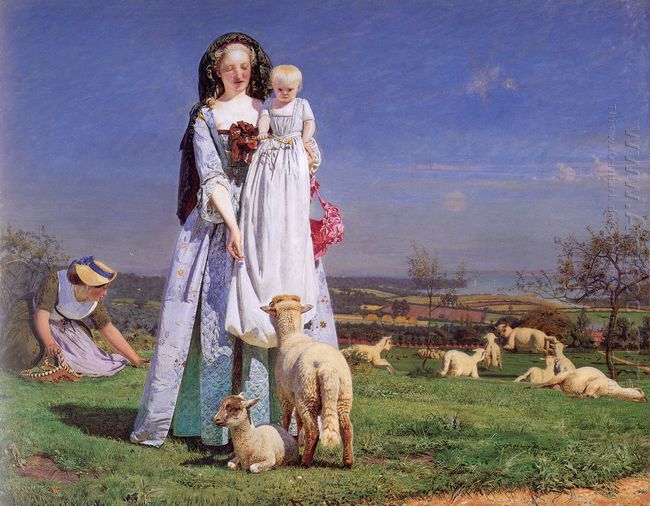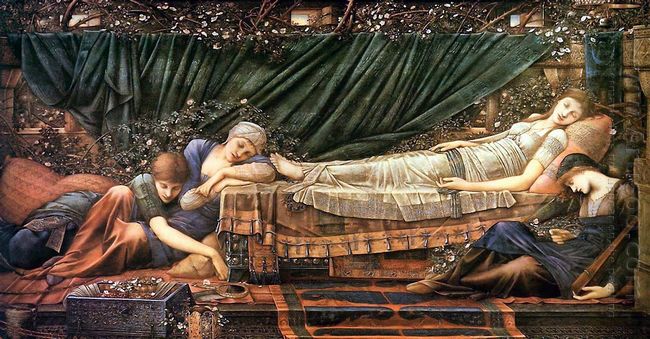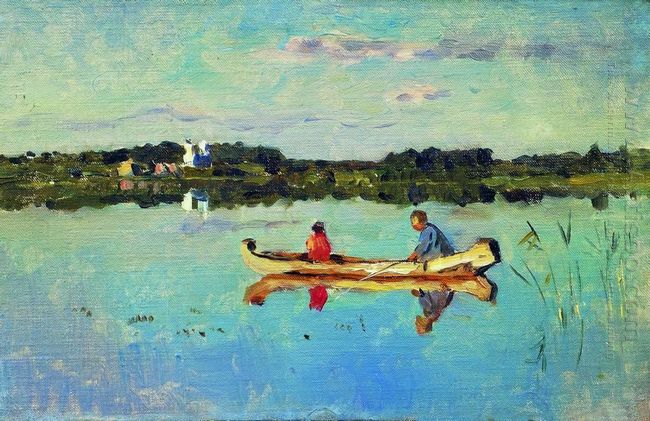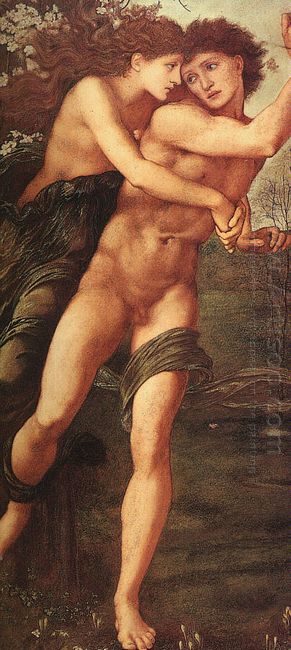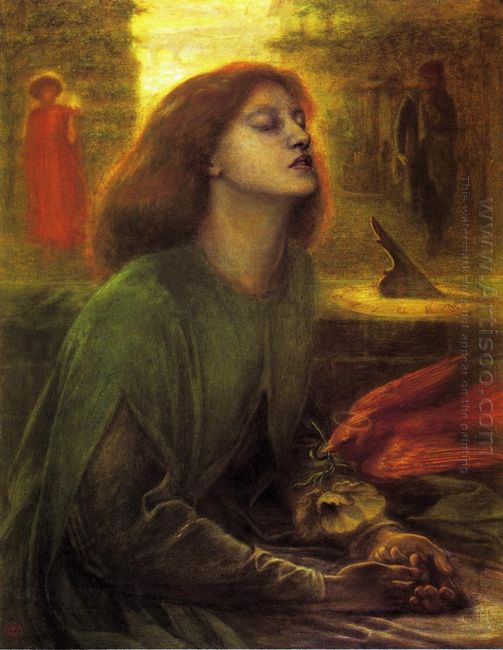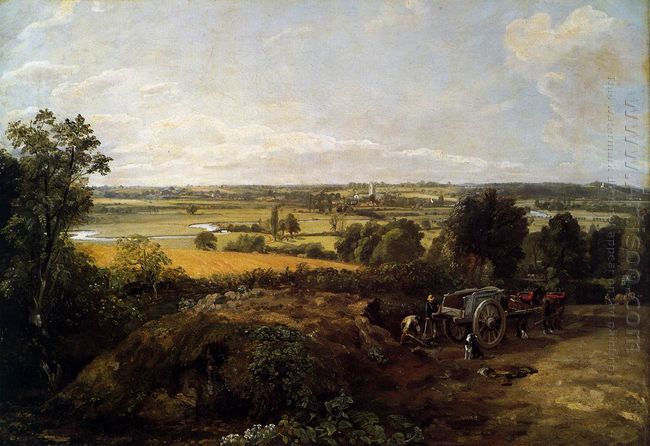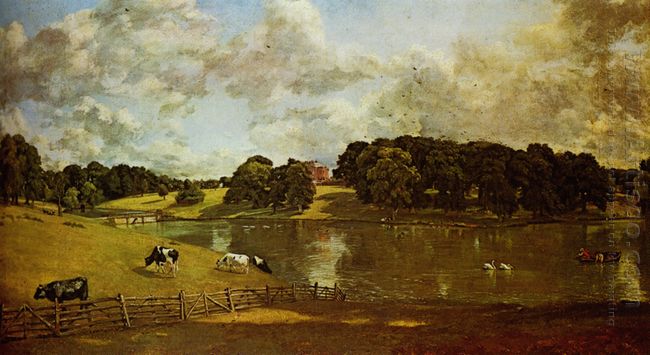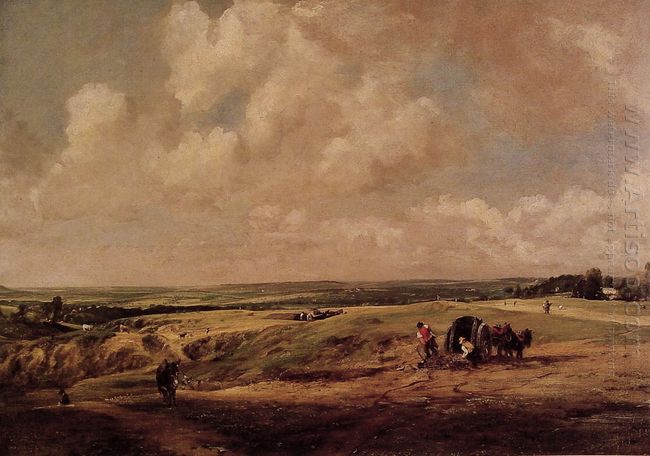Pretty Baa-Lambs is a representative of Ford Madox Brown, a British painter in 19th century that was famous for the details and bright color in his paintings. He studied art at the age of 16 in Antwerp, and when he was 19, he went to Paris and influenced by Neo-Classicism. At the age of 24, Brown met Purism artists in Italy where he was deeply impressed by the paintings of Early Renaissance that contains many sincere and plain realistic factors. In 1846 he made his settlement in England where he got closely touch with the Pre-Raphaelite Brotherhood. Though closely linked to PRB artists, he was actually not a member of the brotherhood itself.
Experience at home and aboard helped to build Brown’s own style. Ford Madox Brown paintings were mainly based on reality life. Pretty Baa-Lambs was his first painting subjected in lambs that depicts a countryside scene with human and lambs. In a beautiful sunny day, lovely ewes and lambs are eating and playing on the grass. On the left side, a woman squats on the grass doing her work. In the front, a young mother is carrying her little girl on her left hand, and reaching out her right hand to play with the lamb in front of her. Looking far into the distance is the spacious landscape and deep blue sky. In the painting, Brown employed bright and warm color, especially on the mother and baby, representing warm and sweet mother’s love, creating an atmosphere of quiet and comfort countryside life in England.
